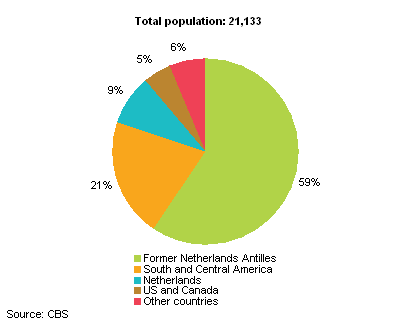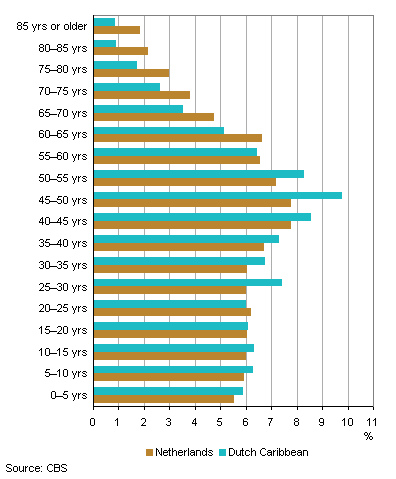Dutch Caribbean population exceeds 21 thousand

The Dutch Caribbean population comprises more than 21 thousand people, i.e. 15.7 thousand on Bonaire, 3.6 thousand on St Eustatius and 1.8 thousand on Saba.
Population larger than anticipated
Since 10 October 2010, the islands of the Dutch Caribbean are officially part of the Netherlands. Prior to that date, they were part of the Netherlands Antilles. A recent survey shows that the Dutch Caribbean population is 2.7 thousand higher than initially estimated.
The islands in the Dutch Caribbean resemble the West Frisian Islands in terms of size and population numbers. Bonaire is about twice the size of Texel and has 10 percent more residents. St Eustatius and Saba together are the same size as Vlieland and have four times as many inhabitants. These two islands are more densely populated than Bonaire.
One in ten people born in the Netherlands
The majority of the Dutch Caribbean population were born on one of the islands in the former Netherlands Antilles. In most cases, they were born on the island where they currently live or an adjacent island. Due to the limited health care facilities in the Dutch Caribbean, pregnant women often travel to nearby larger islands like St Maarten.
The special ties with the Netherlands are borne out by the fact that one tenth of the population are natives of the Netherlands, but many residents come from the mainland of South or Central America. Many residents of St Eustatius and Saba come from the United States and Canada.
Dutch Caribbean residents by native country, 2011

Saba has youngest population
The age distribution of the Dutch Caribbean population does not differ much from the population of the Netherlands, although the islands have more people in the age category 25–55 and fewer in the over-60 age category.
Age distribution Dutch population and Dutch Caribbean population, 2011

The age distribution on Bonaire and St Eustatius hardly differs, but Saba has a younger population. The high proportion of young adults on Saba is caused by the presence of Saba University.
Frank van der Linden
This article is also available in Papiamento